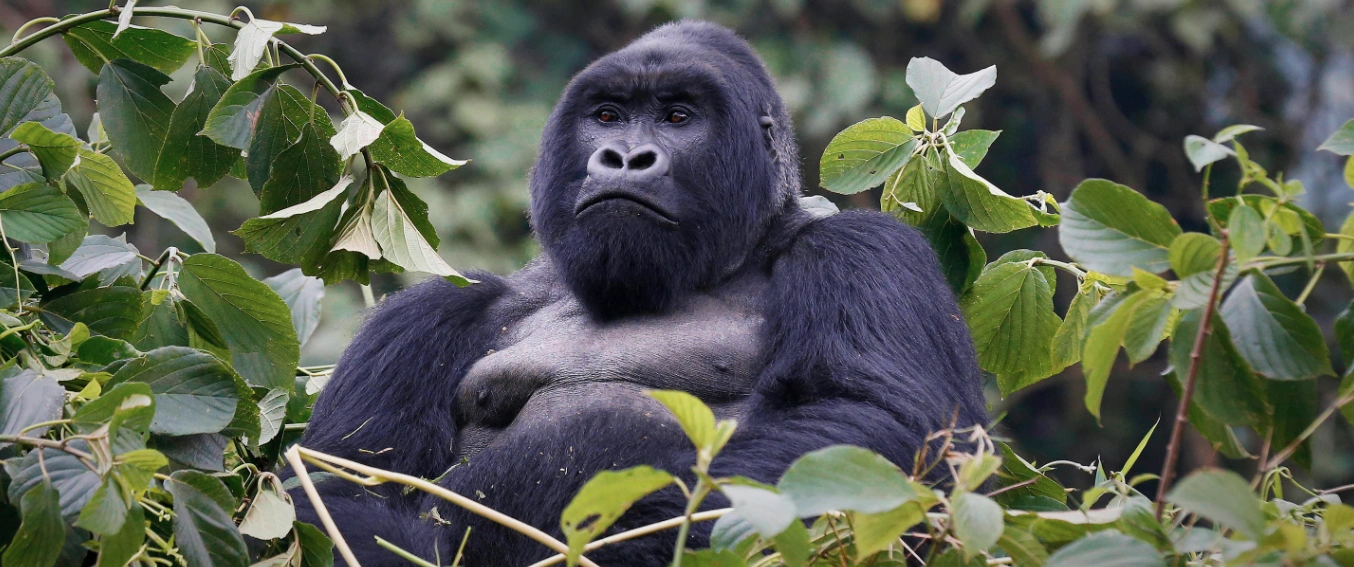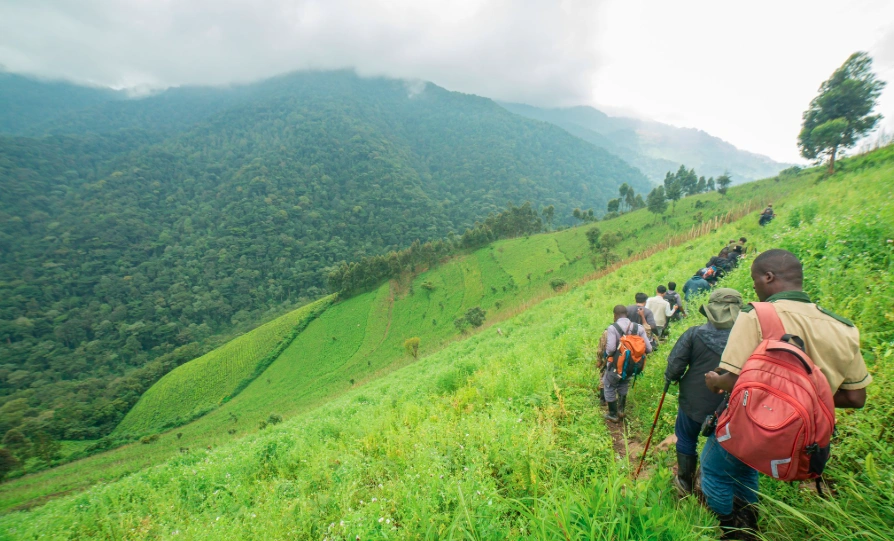Best Times for Gorilla Trekking in Uganda
Mountain gorilla trekking is one of the most emotionally powerful and unforgettable wildlife encounters on Earth—and Uganda is the best place to experience it.
With over half of the world’s remaining mountain gorilla population found in Uganda’s Bwindi Impenetrable National Park and a smaller but significant number in Mgahinga Gorilla National Park, travelers are spoiled for choice.
But knowing when to go can make all the difference between a muddy slog and a crisp, clear, magical journey through the forest.
This guide breaks down the best times to trek based on weather, permits, visitor traffic, forest conditions, and even gorilla behavior, so you can choose a season that aligns with your personal goals and travel style.
Dry Season (Peak Months): June to September & December to February
These are widely considered the best months for gorilla trekking in Uganda—and for good reason.
Weather Conditions: These are the driest months of the year, meaning the trails are less slippery and the skies are often clearer. Bwindi and Mgahinga are rainforest ecosystems, so showers can still occur, but they tend to be lighter and more sporadic.
Trail Accessibility: Drier trails mean easier hikes, shorter trekking distances, and safer forest navigation.
Photography: With less mist, softer light, and fewer raindrops on your lens, you’re more likely to capture clear photos of the gorillas.
High Demand: These are peak tourism months, especially June through August. Permits sell out quickly, so booking well in advance is essential.
Permit Availability: Scarce—especially in Bwindi’s most popular sectors (like Buhoma and Ruhija). Booking at least 3–6 months ahead is recommended.
🌿 Best For: First-time trekkers, photographers, luxury travelers, and anyone who wants the best odds of clear weather and an overall smooth trekking experience.
Rainy Season (Off-Peak Months): March to May & October to Mid-December
Contrary to what many assume, the rainy season can be an excellent time for gorilla trekking—especially for those looking for discounts, availability, and more intimate encounters.
Forest Conditions: Yes, trails are muddier and more physically demanding, but the forest is lush, the air is crisp, and the rainforest feels more alive than ever.
Gorilla Behavior: Food is more abundant during these months, which means gorilla families are less mobile and easier to locate. This can sometimes shorten the trek.
Permit Availability: Much higher. You’ll have more flexibility in choosing trekking sectors and dates.
Discounts: Many luxury and mid-range lodges offer off-season discounts, making it a smart choice for value-conscious travelers.
Less Crowded: Fewer tourists on the trails and in the park means a quieter, more personal wilderness experience.
🌧 Best For: Adventure-seekers, budget travelers, return visitors, and anyone who prefers solitude in nature.
Climate Overview Table
| Month | Season | Rainfall Level | Trail Conditions | Permit Availability | Lodge Rates |
|---|---|---|---|---|---|
| June–August | Dry (Peak) | Low | Easy to Moderate | Very Low | High |
| September | Transitional | Low–Moderate | Moderate | Low | Moderate–High |
| October–November | Rainy (Low) | High | Slippery | Good | Discounted |
| December–February | Dry (Peak) | Low–Moderate | Easy to Moderate | Low | High |
| March–May | Rainy (Low) | High | Slippery/Muddy | Excellent | Discounted |

Choosing Between Bwindi and Mgahinga
While Uganda’s two gorilla trekking destinations—Bwindi Impenetrable National Park and Mgahinga Gorilla National Park—both offer remarkable experiences, each has unique traits that may make one better suited depending on when you plan to visit.
Bwindi Impenetrable National Park
Bwindi is the flagship gorilla trekking destination in Uganda, home to over 20 habituated gorilla families spread across four trekking sectors: Buhoma, Ruhija, Rushaga, and Nkuringo. It’s a vast, misty forest with varying altitudes and terrain, meaning that trekking difficulty and accessibility change seasonally.
Dry Season Benefits: Easier trekking conditions, particularly in steeper sectors like Nkuringo and Rushaga. Forest trails are firmer, and vegetation is slightly thinner—making gorillas easier to spot.
Wet Season Advantages: Gorilla families often forage closer to the starting points. The forest is greener and more atmospheric. Availability of permits is much higher, and the quieter experience can feel more exclusive.
📌 Pro tip: The Buhoma sector is the most popular and fills up fastest during peak months due to its relatively gentle terrain and easier access from Kampala or Queen Elizabeth NP.
Mgahinga Gorilla National Park
Mgahinga is smaller, with just one habituated gorilla group (Nyakagezi), but offers a unique highland trek along the lower slopes of the Virunga volcanoes.
Dry Season: The volcanic terrain becomes much easier to navigate. Given its elevation, Mgahinga is best during drier months when the mountain trails aren’t slippery.
Rainy Season: Trekking can be more strenuous, but the group is very habituated and often found in predictable areas, minimizing hiking time.
🦍 Note: Mgahinga’s Nyakagezi group is highly mobile but has been stable within the park in recent years. However, due to the single-group nature, permit availability is extremely limited year-round.
Choosing Your Trekking Sector in Bwindi
| Sector | Accessibility | Dry Season Experience | Rainy Season Advantage | Key Traits |
|---|---|---|---|---|
| Buhoma | Easiest | Perfect for families, beginners | Still manageable | Gentle terrain, high permit demand |
| Ruhija | Moderate | Clear views, photogenic | Less crowded | Best mix of forest & vistas |
| Rushaga | Steep | Great for fit trekkers | Gorilla groups closer | Higher gorilla family density |
| Nkuringo | Most strenuous | Ideal for dry season | Very slippery in wet | Epic views, advanced hikers only |
Additional Considerations That Influence Timing
Permit Prices
Permit prices are static year-round at USD $800 per person (as of 2024), but the demand curve shifts dramatically:
Book 3–6 months ahead for dry seasons
You can often get last-minute permits during rainy months
Gorilla Habituation Experience
If you’re visiting during quieter months and want something longer and more immersive, consider the Gorilla Habituation Experience (GHE) in Rushaga:
4 hours with a semi-habituated gorilla family
$1,500 per permit
Fewer visitors, usually available year-round
Lodging
High-end lodges offer rainy season discounts up to 30–50%, particularly from March–May and October–November.
This makes low season the best time for a luxury safari on a mid-range budget.
Weather in Gorilla Trekking Regions
Both Bwindi and Mgahinga lie in high-altitude rainforest zones—expect cool temperatures, humid air, and frequent rain regardless of season. However, weather trends can still guide your choice of timing.
| Season | Months | Avg. Rainfall | Temperature Range | Trekking Trail Conditions |
|---|---|---|---|---|
| Dry (Peak) | Jun–Sept, Jan–Feb | Low | 15–25°C | Dry, firmer trails, easier hikes |
| Wet (Low) | Mar–May, Oct–Dec | High | 13–23°C | Muddy, slippery, but lush & green |
Important: Even in dry months, morning or evening rain showers are common. Waterproof gear and hiking boots are essential year-round.
Pros and Cons of Each Season

Dry Season (June–September, January–February)
Pros
Best trail conditions
Gorilla viewing is more reliable
Easier logistics with less vehicle trouble
Most popular months (especially July and August)
Cons
Permits sell out fast
Lodges often fully booked, with premium pricing
Trails can be dusty and less scenic than rainy season
Rainy Season (March–May, October–early December)
Pros
Fewer tourists, quieter treks
More availability of permits and lodges
Verdant scenery, photogenic misty landscapes
Great lodge discounts for budget-conscious luxury
Cons
Trails can be steep and slippery
Access roads may become impassable after heavy rain
Some lodges and airstrips close temporarily due to low occupancy
Key Gorilla Trekking Tips by Season
Book early if trekking in June–September: Aim for a 4–6 month lead time.
Travel with a 4WD in the wet season. Mudslides and unpaved roads are common in Bwindi’s remote sectors.
Travel insurance is recommended for rainy season treks—flight delays and road issues are more likely.
Waterproof daypack, long-sleeved clothes, gaiters, and gardening gloves help in all seasons.
In the wet season, carry an extra dry pair of socks—you’ll thank yourself.
FAQs: The Best Times for Gorilla Trekking in Uganda
Yes. Gorilla trekking happens daily, even in the rain. Uganda Wildlife Authority rangers lead all treks, rain or shine.
July and August are the busiest and most consistent for good trail conditions. But May and November offer solitude and lush views—if you can handle a bit of mud.
Sometimes yes. Gorilla families often stay closer to the trailheads during cool, wet conditions. However, hiking becomes more strenuous due to mud and vegetation.
No. Permit costs are the same year-round, but lodge discounts and wider availability make the rainy season more cost-effective overall.
Absolutely. Rain does not stop treks, and gorillas are active even in heavy downpours. In fact, they sometimes rest near clearings after rain—making them easier to photograph.

